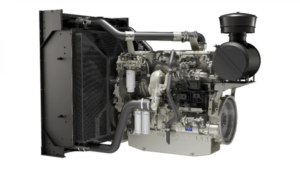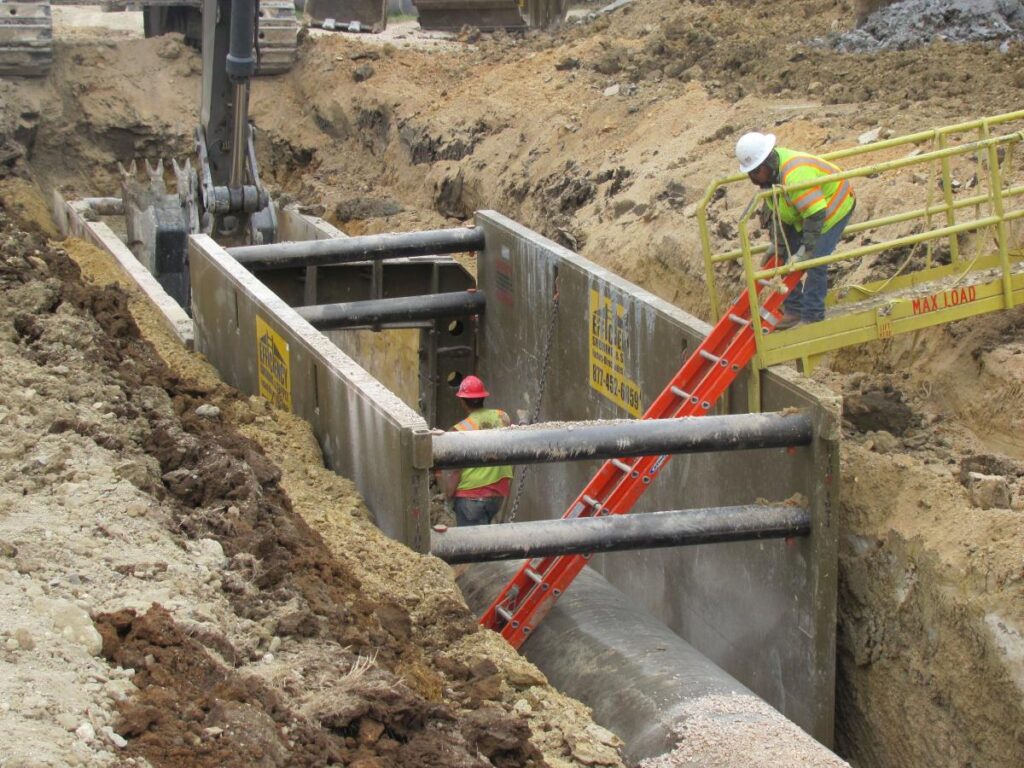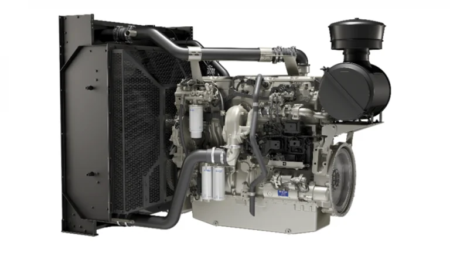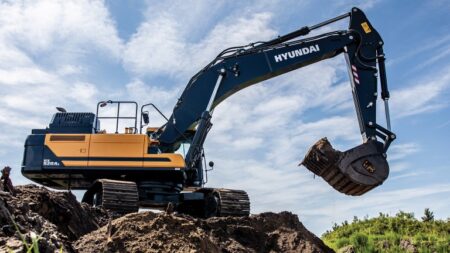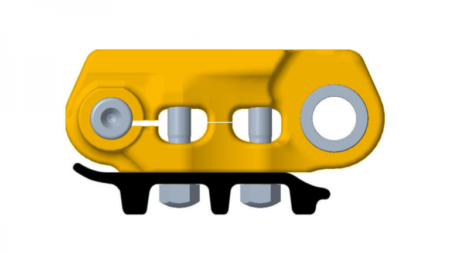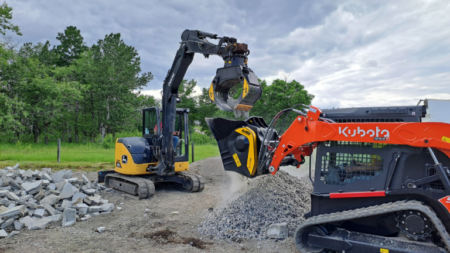Photo courtesy of NAXSA
OSHA regulations require a trench protection system — such as a steel trench shields — in excavations 5 ft. or deeper. A means of access and egress, such as a ladder, is required in trenches 4 ft. or deeper.
Excavation and trenches are frequently a part of construction and infrastructure projects.
While trenching work is necessary in laying the foundation for utilities, pipelines and other projects, they also pose significant safety risks if not managed properly.
The Occupational Safety and Health Administration (OSHA) has established guidelines and standards (OSHA 1926 Subpart P) to ensure the safety of workers involved in excavation activities. Here are five essential tips for working around excavation and trenches safely.
Proper Planning, Inspection
One of the fundamental principles of trench safety, and all safety for that matter, is thorough planning and inspection before any excavation work begins. OSHA Standards emphasize the importance of assessing the soil, structure, and environmental conditions of excavations to identify potential hazards.
Soil analysis is a critical component of planning. Different types of soil present different risks, and understanding these risks is crucial. Additionally, it is vital for regular inspections, especially after rain or other weather events, to help ensure that the trench remains secure throughout the excavation process.
Trench Protection Systems
Excavations and trenches in any depth can create a serious hazard or injury, however OSHA mandates the use of protective systems at 5 ft. deep or deeper (4 ft. in the state of Washington) in any excavation where work will be performed by an employee. These systems are designed to prevent cave-ins and include options such as sloping, benching, shoring and shielding.
- Sloping: This involves cutting back the trench wall at a designated angle inclined away from the excavation. The angle is determined by the soil type and other factors, and it helps to minimize the risk of soil collapse.
- Benching: Instead of a continuous slope, benches or steps are created in the trench walls. The width and depth of the benches depend on soil conditions and the trench’s depth.
- Shoring: This method involves installing supports, such as aluminum hydraulic, aluminum walers, or timber shoring; to prevent unexpected soil movement and protect workers inside the trench.
- Shielding: Trench boxes or shields are used to protect workers by providing a barrier between them and the trench wall. These shields are designed to withstand soil movement and cave-ins.
Access, Egress
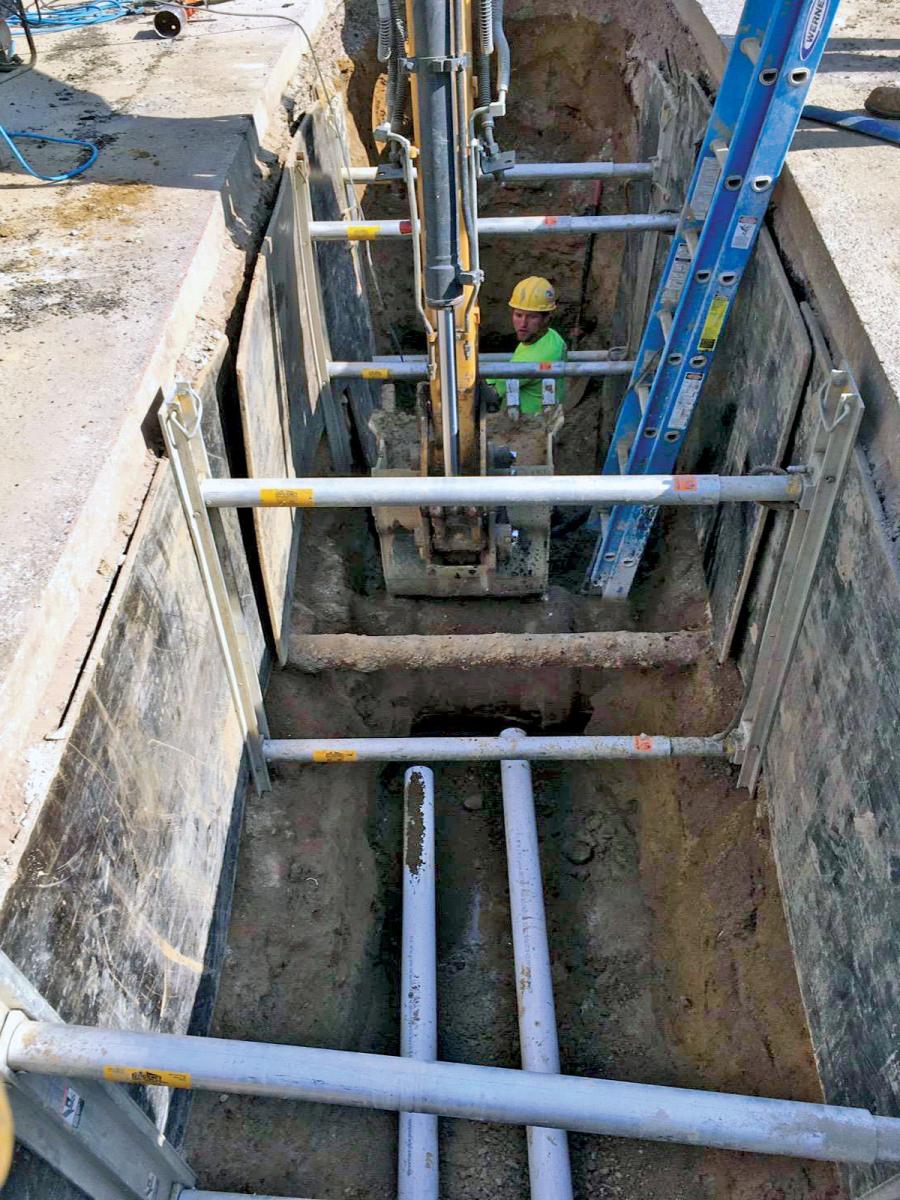
Photo courtesy of NAXSA
Trenches and excavations deeper than 4 ft. must have a designated means of access, such as portable ladders or ramps, within 25 ft. of each employee. The ladder should extend a minimum of 3 ft. above the trench edge to facilitate safe entry and exit. Though it might seem unnecessary, training and review of portable ladders guidelines and requirements are required. Ensuring easy and quick access to the trench is crucial in case of emergencies or the need for a rapid exit.
Utilities Identification, Protection
Excavation work generally involves digging in areas where underground utilities are present. Accidentally striking utility lines can lead to severe injuries, utility service disruptions, community damage and costly repairs. Before excavation begins, contact the relevant utility locating services to identify the location of underground utilities.
Overhead power lines also present a danger and are often overlooked when working in excavations and trenches.
Continuous Monitoring, Training
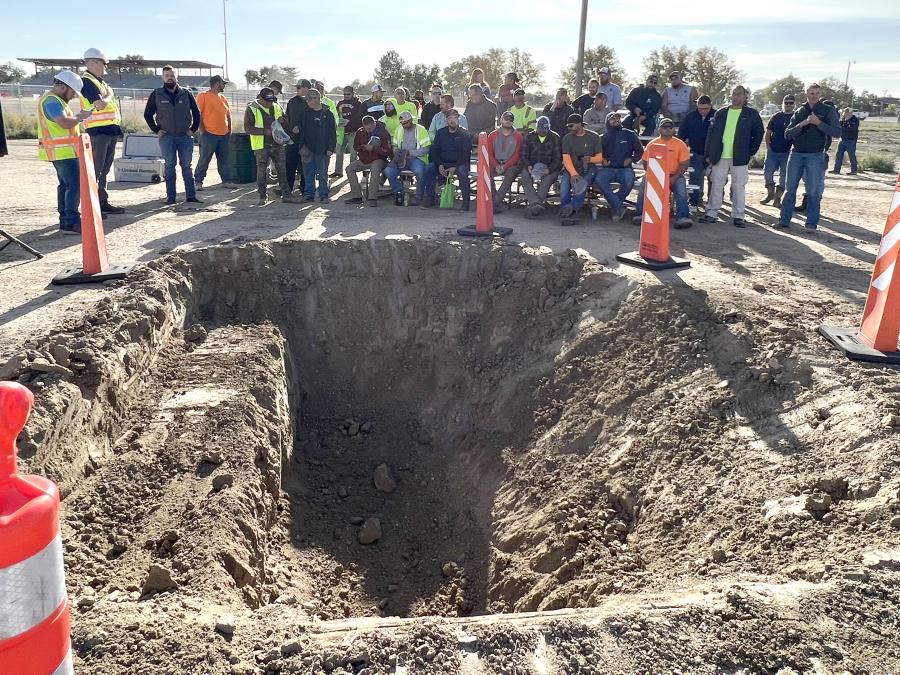
Photo courtesy of NAXSA
All workers involved in excavation activities must receive proper training on trench safety. Effective trench safety goes beyond initial planning and implementation of safety measures.
OSHA emphasizes the need for continuous monitoring and training throughout the excavation project. The Competent Person on the excavation project must regularly inspect the excavation site; including soil conditions, protective systems, and access points before any work is to be done. Continuous monitoring helps identify any changes or potential hazards, allowing for prompt corrective action.
These tips are paramount for protecting the lives of workers and preventing accidents. Prioritizing trench safety not only ensures compliance with regulations but also contributes to the overall success of all construction projects with trenches and excavations.
Cisco Sarmiento is the safety committee chairman of the North American Excavation Shoring Association. NAXSA was created to promote the safe and efficient use of excavation shoring practices with the goal of zero deaths and injuries in trenches and excavations.
Read the full article here


